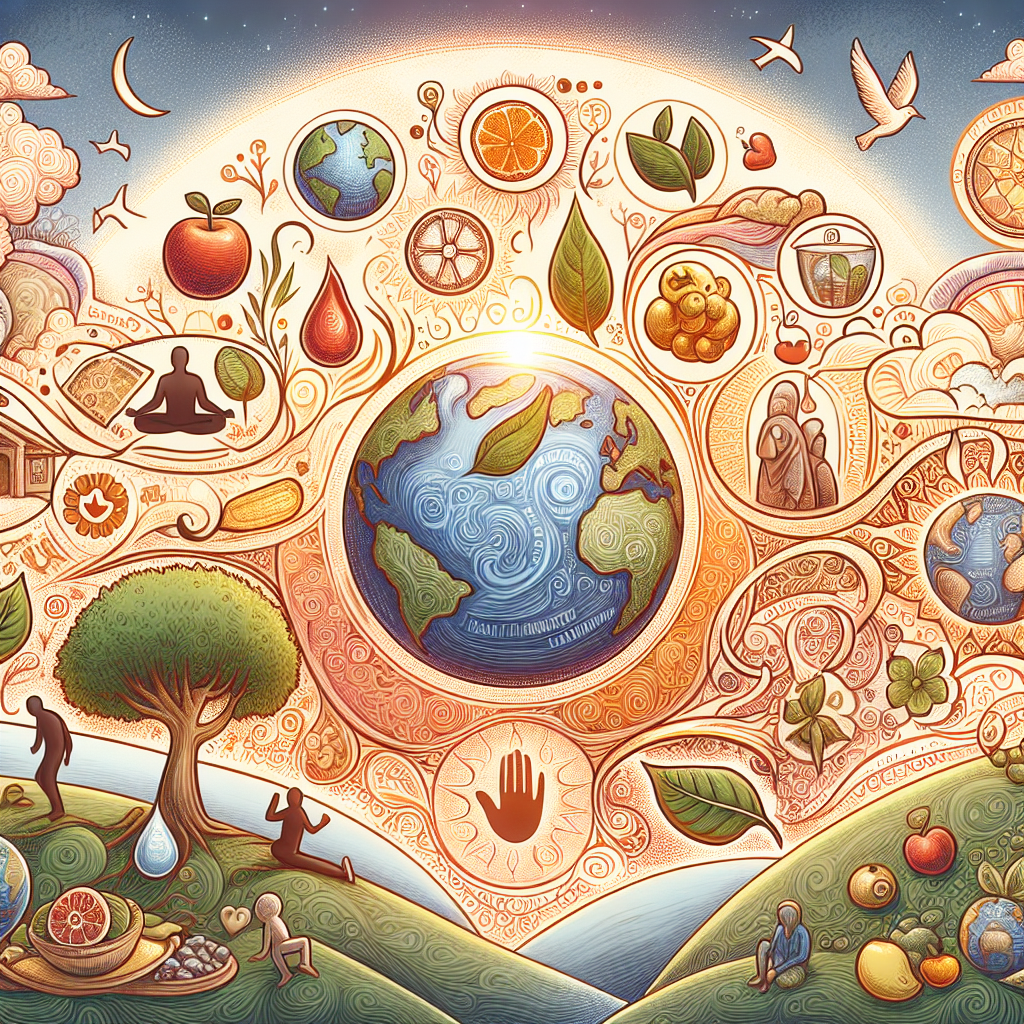Longevity Secrets from the World’s Healthiest Cultures

Discover the secrets to a longer, healthier life from the world’s healthiest cultures. Uncover the lifestyle choices and habits that contribute to longevity. Don’t wait, start your journey to a healthier, longer life today. Click here to learn more.
Unveiling Longevity Secrets from the World’s Healthiest Cultures
Unveiling longevity secrets from the world’s healthiest cultures is a fascinating journey that takes us across the globe, from the sun-drenched Mediterranean to the snow-capped mountains of Japan. These cultures, often referred to as “Blue Zones,” are renowned for their high concentration of centenarians, individuals who live to be 100 years or older. The secrets to their longevity are not found in a magic pill or a revolutionary medical procedure, but rather in their lifestyle choices, dietary habits, and social structures.
Firstly, let’s embark on a journey to the Mediterranean, specifically to the island of Sardinia, Italy. Sardinians are known for their longevity, with a higher proportion of centenarians than anywhere else in the world. The secret to their long lives is a combination of factors, including a plant-based diet rich in legumes, whole grains, fruits, and vegetables, complemented by moderate consumption of red wine. Additionally, Sardinians lead active lives, often working in the fields or the mountains until a ripe old age. Their strong sense of community and family ties also contribute to their longevity, providing emotional support and a sense of belonging.
Next, we travel to Okinawa, Japan, another Blue Zone known for its high number of centenarians. The Okinawan diet is low in calories but high in nutrients, with a focus on vegetables, whole grains, and soy products. They also practice a tradition known as “Hara Hachi Bu,” which involves eating until they are 80% full, thereby avoiding overeating and maintaining a healthy weight. Okinawans also maintain an active lifestyle, with regular physical activity incorporated into their daily routines. Moreover, they place a high value on social engagement and maintaining strong relationships with family and friends.
Moving on, we find ourselves in Loma Linda, California, home to a large community of Seventh-day Adventists, who outlive their fellow Americans by an average of ten years. Their longevity is attributed to their vegetarian diet, regular physical activity, and a strong sense of community. They also observe a weekly day of rest, which reduces stress and promotes mental well-being.
Lastly, we visit the Nicoya Peninsula in Costa Rica, where residents enjoy one of the highest life expectancies in the world. Their longevity secrets include a diet rich in tropical fruits, beans, corn, and rice, as well as regular physical activity. They also maintain strong social networks and have a sense of purpose in life, which they refer to as “plan de vida.”
In conclusion, the longevity secrets from the world’s healthiest cultures are not elusive or complex. They involve a balanced, plant-based diet, regular physical activity, strong social connections, and a sense of purpose in life. These cultures also emphasize moderation, whether it’s in eating, drinking, or working. While genetics may play a role in longevity, it’s clear that lifestyle choices and environmental factors have a significant impact. So, perhaps it’s time we take a leaf out of their book and incorporate these practices into our own lives for a healthier, longer life.
Exploring the Lifestyle Practices of the World’s Healthiest Cultures for Longevity

Longevity, the ability to live a long and healthy life, is a goal that many of us aspire to. It is fascinating to note that there are certain cultures around the world where people not only live longer but also enjoy a higher quality of life. These cultures, often referred to as “Blue Zones,” include regions such as Okinawa in Japan, Sardinia in Italy, and Nicoya in Costa Rica. By exploring the lifestyle practices of these world’s healthiest cultures, we can uncover the secrets to their longevity.
Firstly, one common thread that runs through these cultures is their diet. The people of Okinawa, for instance, follow a plant-based diet rich in green and yellow vegetables. They consume a low amount of meat and dairy products, and their primary source of protein is soy. Similarly, the Sardinians consume a Mediterranean diet, which is high in fruits, vegetables, whole grains, and olive oil, with moderate consumption of fish and wine. The Nicoyans, on the other hand, consume a diet rich in legumes, especially black beans, and corn, which are staple foods in their region. These diets, rich in antioxidants and low in processed foods, contribute significantly to their longevity.
Secondly, physical activity is an integral part of their daily lives. Unlike the sedentary lifestyle that is prevalent in many modern societies, these cultures incorporate physical activity into their daily routines. In Okinawa, people practice Tai Chi, a form of martial arts that promotes flexibility and balance. In Sardinia, people often engage in rigorous physical activities such as shepherding and farming. In Nicoya, horseback riding and farming are common activities. This regular physical activity not only keeps them fit but also reduces the risk of diseases such as heart disease and diabetes.
Thirdly, these cultures place a high value on social and community connections. In Okinawa, the concept of “moai,” or social support groups, is prevalent. These groups provide emotional, social, and even financial support, contributing to a sense of belonging and reducing stress. Similarly, in Sardinia and Nicoya, strong family ties and community involvement are common. These strong social connections contribute to their mental well-being, which is a crucial aspect of overall health and longevity.
Lastly, these cultures have a sense of purpose in their lives. The Okinawans refer to this as “ikigai,” or a reason for being. This sense of purpose, whether it is through work, family, or community involvement, gives them a reason to wake up in the morning. It provides them with motivation and a positive outlook on life, which can contribute to their longevity.
In conclusion, the secrets to longevity from the world’s healthiest cultures are not so secret after all. They involve a healthy diet, regular physical activity, strong social connections, and a sense of purpose in life. While these practices may seem simple, they require a commitment to a lifestyle that prioritizes health and well-being. As we strive for longevity, we can learn from these cultures and incorporate these practices into our own lives. After all, longevity is not just about living longer; it’s about living well.
The Role of Diet and Exercise in the Longevity of the World’s Healthiest Cultures
Longevity, the ability to live a long and healthy life, is a coveted attribute that many strive to achieve. It is fascinating to observe that certain cultures around the world have cracked the code to longevity, with a significant number of their population living well into their 90s and even 100s. The secret to their long and healthy lives often lies in their lifestyle choices, particularly their diet and exercise routines.
Diet plays a crucial role in the longevity of these cultures. The Mediterranean diet, for instance, is renowned for its health benefits and is a common feature among the world’s healthiest cultures. This diet is rich in fruits, vegetables, whole grains, legumes, and olive oil, and includes moderate amounts of fish and poultry. It is low in red meat, sugar, and saturated fats. The Mediterranean diet is associated with lower rates of heart disease, cancer, and Alzheimer’s disease. It is also linked to increased longevity.
Similarly, the traditional Japanese diet, which is low in processed foods and high in fresh, seasonal produce, is another key to longevity. This diet is rich in fish, seaweed, soy, fruits, and vegetables, and is low in meat and dairy. The Japanese have one of the highest life expectancies in the world, and their diet plays a significant role in this.
In addition to diet, regular physical activity is another common thread among the world’s healthiest cultures. The people of Okinawa, Japan, for example, are known for their longevity, and their active lifestyle is a major contributing factor. Okinawans engage in regular physical activity, such as gardening, walking, and practicing martial arts. They also practice a principle called “Hara Hachi Bu,” which means eating until they are 80% full, thereby avoiding overeating and maintaining a healthy weight.
The people of Sardinia, Italy, another culture known for its longevity, also lead active lifestyles. Sardinians are often shepherds who walk long distances daily, which contributes to their physical fitness. They also follow a Mediterranean diet, rich in whole grains, fruits, vegetables, and lean proteins, which contributes to their health and longevity.
The people of Loma Linda, California, a community with one of the highest concentrations of Seventh-day Adventists in the United States, also live longer than most Americans. Their longevity is attributed to their vegetarian diet, regular physical activity, and strong community ties. They also observe a weekly day of rest, which reduces stress and contributes to their overall well-being.
In conclusion, the world’s healthiest cultures attribute their longevity to a combination of a balanced, nutrient-rich diet and regular physical activity. These cultures also emphasize the importance of community, stress management, and a positive outlook on life. While genetics may play a role in longevity, it is clear that lifestyle choices significantly influence our health and lifespan. By adopting some of these practices, such as eating a balanced diet, engaging in regular physical activity, and maintaining strong social connections, we too can enhance our chances of living a long and healthy life.